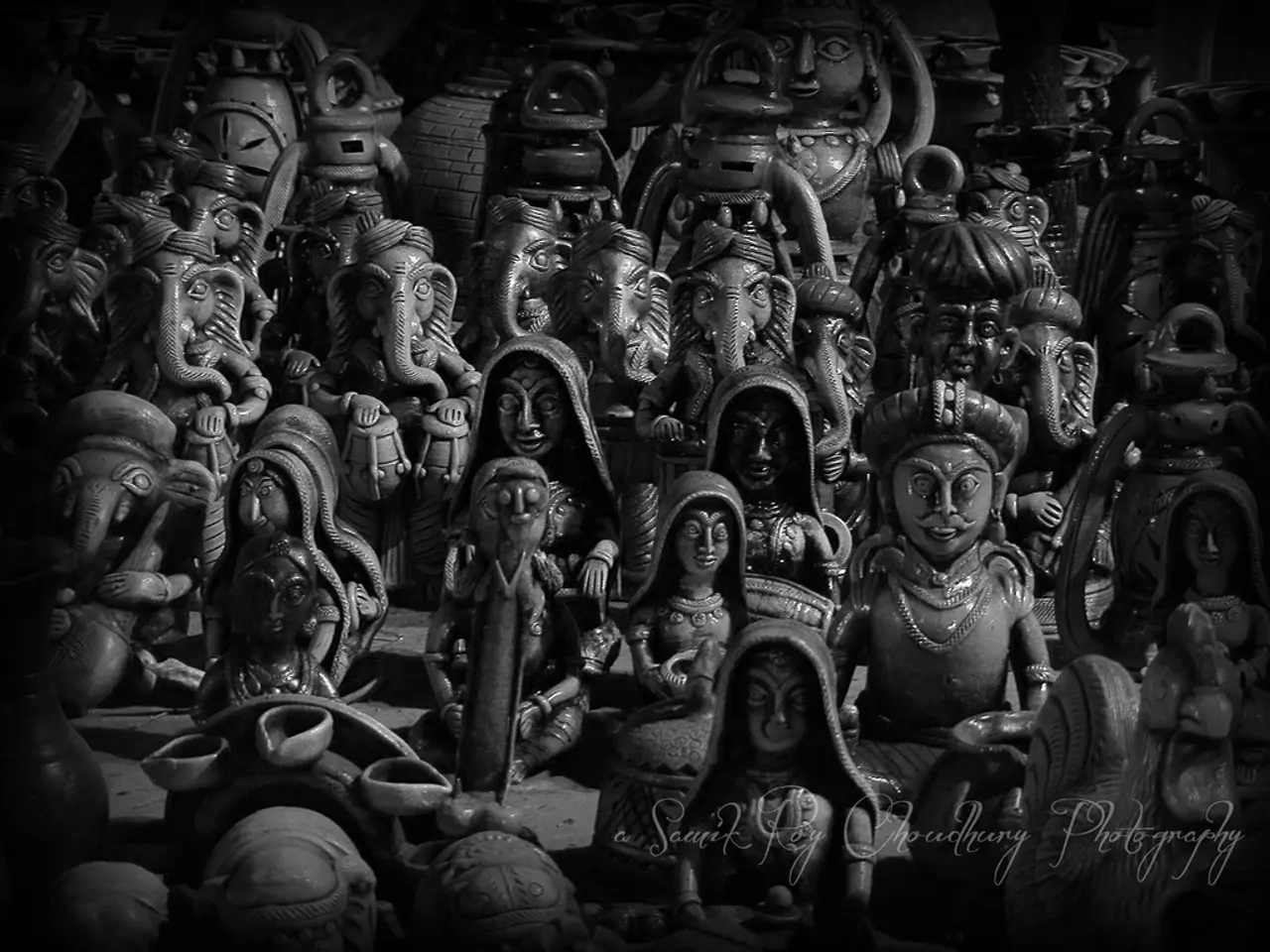Nine-Day Navratri Festival Exploration and Remarkable Significance
Navratri: Nine Nights of Divine Celebration and Spiritual Reflection
Navratri, a nine-night Hindu festival, is a beautiful fusion of tradition and spirituality that celebrates the triumph of good over evil. Each night of Navratri is dedicated to a different form of the goddess Durga, symbolizing her various aspects and qualities.
On the first day, Pratipada, the festival begins with the worship of Goddess Shailputri, the daughter of the Himalayas. She is depicted riding a bull and holding a trident, symbolizing purity, grace, and strength. Devotees pray for strength, endurance, and the will to overcome obstacles on this day.
The second day, Dwitiya, is dedicated to Brahmacharini, a form of Goddess Parvati who represents penance, virtue, and austerity. Brahmacharini is often depicted holding a rudraksha mala and a kamandalu, symbolizing her meditative and ascetic nature.
The third day is significant for seeking protection and courage in the face of challenges. Devotees wear the color red on this day, symbolizing the fierce and courageous nature of Chandraghanta. Chandraghanta is a warrior form of the goddess who rides a tiger and possesses a crescent moon on her forehead.
Ashtami, the eighth day, is marked by the worship of Maha Gauri, a symbol of purity and serenity. Seekers of peace, tranquillity, and serenity turn to Maha Gauri on this day. The color for this day is pink, symbolizing purity and the grace of the goddess.
Navami, the ninth day, is dedicated to Goddess Siddhidatri, the bestower of supernatural powers and knowledge. Devotees seek enlightenment, wisdom, and the ability to harness inner potential on this day. The color for this day is sky blue.
Shashti, the sixth day, is devoted to Goddess Katyayani, a fierce and warrior-like form of Durga. Katyayani is depicted with four arms and riding a lion. The color for this day is orange, signifying courage and enthusiasm.
On the seventh day, Saptami, Goddess Kalratri is revered, a fierce and destructive form of the goddess, symbolizing the destruction of ignorance and the victory of light over darkness. Devotees wear white on this day.
The festival concludes with the worship of Durga in her final form, Durga Siddhidatri, on the tenth day, Vijayadashami. This day symbolizes the victory of good over evil and the triumph of the divine feminine.
Navratri serves as a spiritual journey, guiding us to seek the divine within ourselves and to embrace the goodness that prevails over all adversities. Fasting during Navratri holds great spiritual significance, a way for devotees to purify their bodies and minds, and show devotion to the goddess Durga.
Participants in Navratri celebrations come together in circular formations to dance the energetic and colorful dance form known as Garba, symbolizing the joy of the goddess's victory over evil. Navratri is a festival of dance, music, and celebration, but also a time for deep spiritual reflection and devotion, seeking blessings, strength, and enlightenment during these nine sacred nights.
As Navratri continues to be celebrated with fervour each year, it reminds us of the eternal power of the goddess and the importance of righteousness in our lives. Navratri is a beautiful reminder of the divine feminine and the triumph of good over evil, a celebration that transcends time and unites people in a shared reverence for the divine.
Read also:
- Peptide YY (PYY): Exploring its Role in Appetite Suppression, Intestinal Health, and Cognitive Links
- Toddler Health: Rotavirus Signs, Origins, and Potential Complications
- Digestive issues and heart discomfort: Root causes and associated health conditions
- House Infernos: Deadly Hazards Surpassing the Flames







